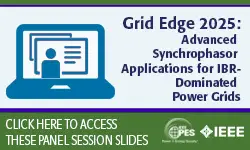Slides for Session 2- IEEE 2030.5 Revision Review & the GREAT-DR Use Case presented by Robbie Simpson
Robbie Simpson
-
Members: FreeSponsoring Society
IEEE Members: $11.00
Non-members: $15.00Pages/Slides: 25
25 Apr 2018
Information and communication technologies enable to realize the smart grid vision but also bring vulnerabilities. It is important to analyze the impact of possible cyber-attacks on the power grid and develop defense mechanisms. Cyber-physical security analysis needs to be performed to minimize the impact of the potential cyber attacks on the power grid. Keeping the power on to critical facilities such as hospitals and fire department during cyber events is essential. Microgrids and DER can improve the resiliency of the critical loads during cyber-attacks and grid disturbances. There is a need for formal metrics to quantify resiliency of the electric grid, or different configurations of the same network. This tutorial will cover basic of cyber infrastructure for the power grid, cyber vulnerabilities, common vulnerabilities and exposures (CVE) score, recent cyber attacks against the power grid, cyber-physical security analysis, defining resiliency, and a tool to study the cyber-physical resiliency of the electric grid. Session 3: - Introduction to Resiliency and defining it >>> Need for resiliency assessment and motivation with increasing weather events and cyber events. How to define resiliency and what characteristics are needed in the resilient power grid. - Measuring Resiliency >>> Process to measure resiliency and how it will be useful for the utilities. - Composite Resiliency Metric using AHP >>> Mathematical details for resiliency assessment algorithm using Analytical Hierarchal Process and example using IEEE test systems and utility test system.
Primary Committee:
IEEE Smart Grid Tutorials


